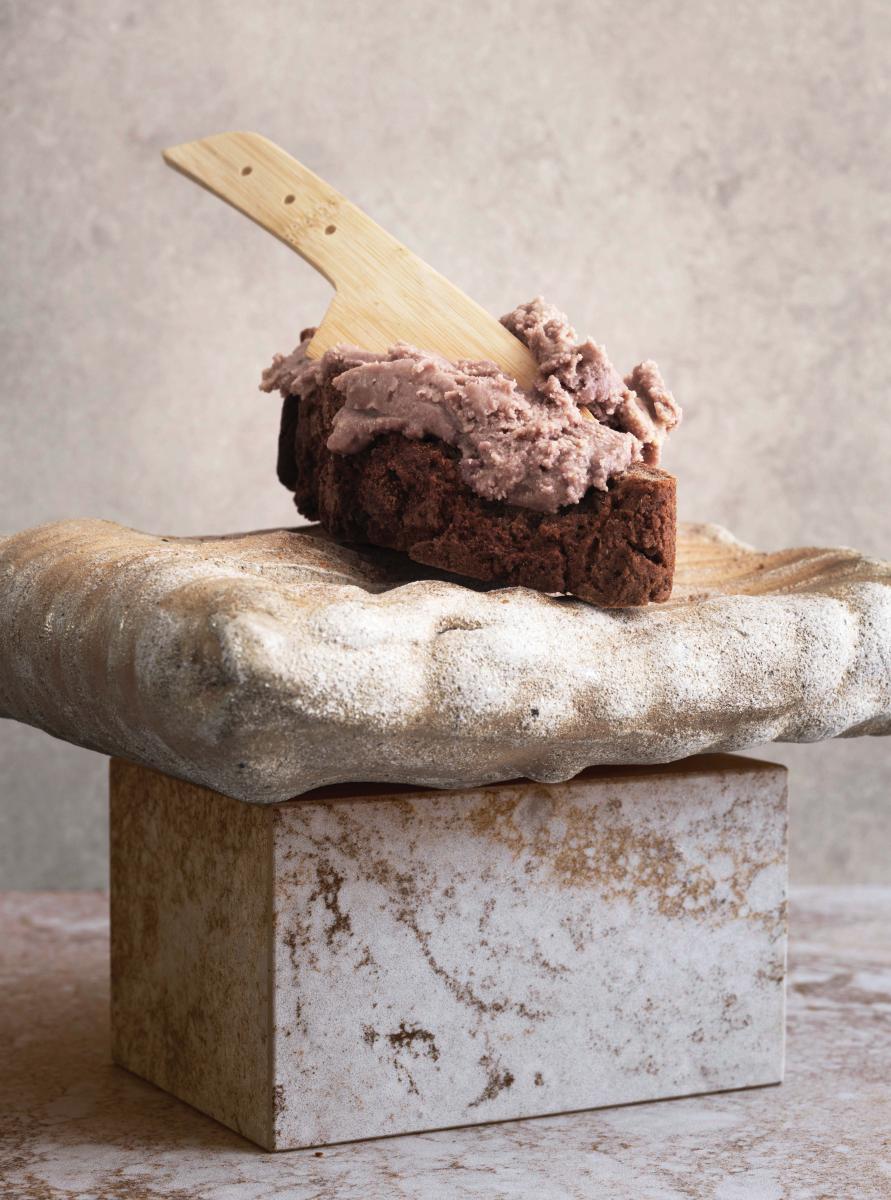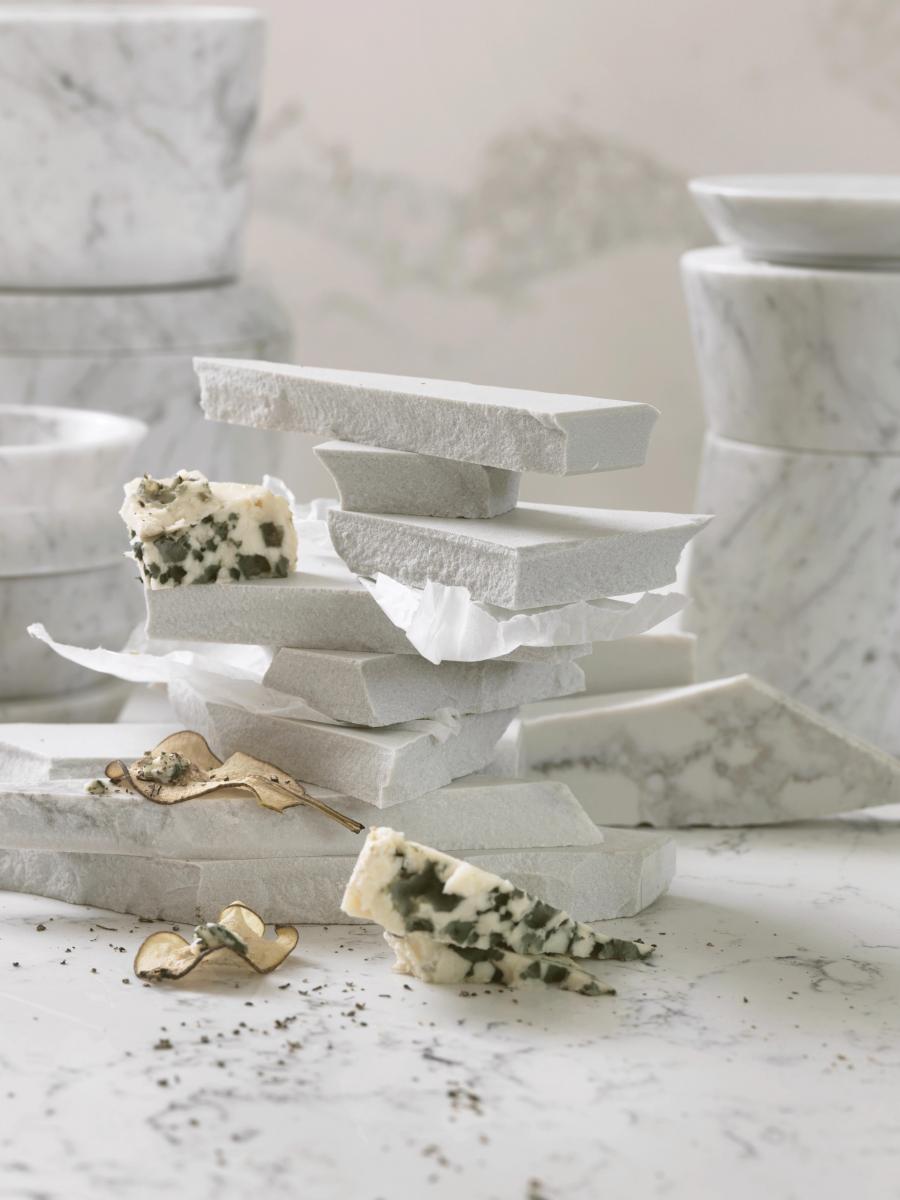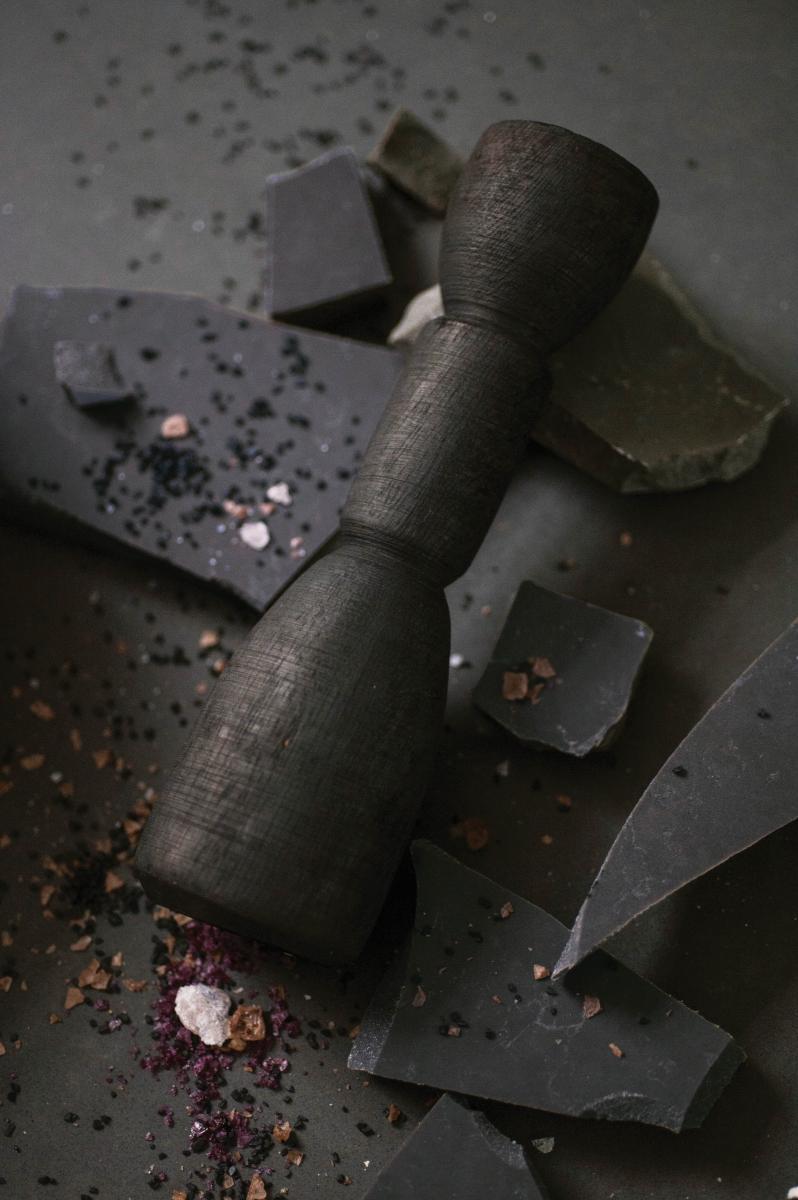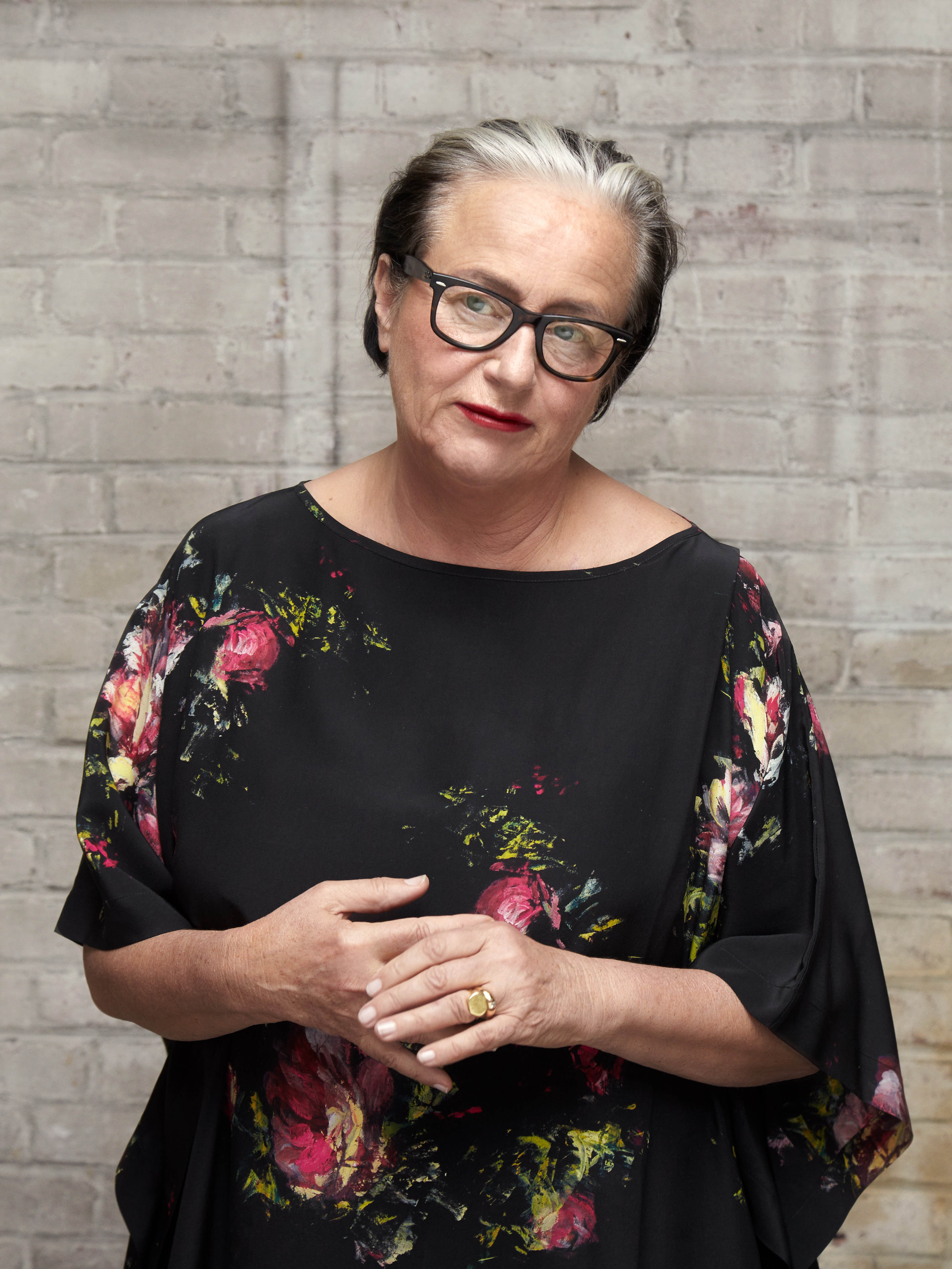Lidewij Edelkoort cooks up new design ideas for Caesarstone in 'Form Follows Food'
Major Kitchen Trends are being brought to you by Caesarstone and Lidewij Edelkoort in this year's kitchen trend book, titled Form Follows Food.
Fish and chips? Pah! People want a whole eating experience, which means the food has to be designed to look good as well as taste good. This has led to a merging of the design and culinary worlds, deriving inspiration from each other and creating a multisensory experience of creative expression in the kitchen itself, as well as the food prepared in it.
This trend inspired quartz company Caesarstone to work with long term partner Li Edelkoort, the fashion trend guru, on Caesarstone's annual kitchen trend book for 2019.
Form Follows Food includes 60 original photographs shot at Studio Edelkoort. The book explores major trends and presents them through the work of three young designers, whose art relates to food and form. The stunning photography uses Caesarstone materials that reflect these same major design trends.
Jon Stanley, VP Marketing at Caesarstone UK, says: “This new trend book collaboration strengthens our excellent relationship with Studio Edelkoort, who has been an active partner in our product development process over some years, identifying and focusing current and future trends. Caesarstone invests heavily in trend research and product innovation, which can be seen in the aesthetic quality of the materials, underpinned by the worldwide large-scale adoption of our brand by many leading architectural and design firms.
“The decision for the book to include unique designers who are leveraging culinary influences in their day-to-day activity was intended to illustrate how inspiration is expressed in the final product. Much like our desire to offer infinite design options that draw inspiration from current trends alongside classical influences.”
Li Edelkoort puts it this way: “Today food is a design element in and of its own right, which encourages openness and boldness in the kitchen environment. The kitchen has been redesigned as the central meeting point in the home and favoured over the old-fashioned living room. This leads to a chain of activities in the home, including remodeling and re-equipping the kitchen, to ensure that all of the design components match.”
 There's Conceptual Concrete, raw and rough reflected in dishes made of unrefined, rough-tecxtured ingredients. This is rough and raw, free of ornamentation. Studio Formafantasma, the Amsterdam-based Italian design duo, have been involved in recent years in the creation of art from ‘natural’ materials. Exploring issues such as the relationship between tradition, local culture and sustainability, the studio has worked in the past with companies such as Fendi, Hermès and Lexus. The dynamic duo has created a collection of vessels made from a biomaterial composed primarily of flour, agricultural waste and natural limestone that illustrates the rough and raw trend. The objects are characterized by colours and materials reminiscent of bread baked with spices, vegetables and roots, as shown in the photography in Form Follows Food.
There's Conceptual Concrete, raw and rough reflected in dishes made of unrefined, rough-tecxtured ingredients. This is rough and raw, free of ornamentation. Studio Formafantasma, the Amsterdam-based Italian design duo, have been involved in recent years in the creation of art from ‘natural’ materials. Exploring issues such as the relationship between tradition, local culture and sustainability, the studio has worked in the past with companies such as Fendi, Hermès and Lexus. The dynamic duo has created a collection of vessels made from a biomaterial composed primarily of flour, agricultural waste and natural limestone that illustrates the rough and raw trend. The objects are characterized by colours and materials reminiscent of bread baked with spices, vegetables and roots, as shown in the photography in Form Follows Food.
 In contrast, Mood Marbling is classical inspiration expressed through opulence and ornamentation. This timeless trend calls on the industry to make creative use of more exciting materials, through sophisticated surfaces that include veining motifs inspired by nature. The veined texture trickles down into food design through marbled foods and desserts, including blue cheese, fresh produce and even colourful meringues.
In contrast, Mood Marbling is classical inspiration expressed through opulence and ornamentation. This timeless trend calls on the industry to make creative use of more exciting materials, through sophisticated surfaces that include veining motifs inspired by nature. The veined texture trickles down into food design through marbled foods and desserts, including blue cheese, fresh produce and even colourful meringues.
The Meringue Girls, a pair of young pastry chefs from London, blend life and colour into traditional British baking. They serve meringues in a rainbow of colours and flavours. As part of the collaboration with the trend book, the Meringue Girls presented their famous dessert in colours inspired by Caesarstone's Supernatural collection.
 Then there's Dark Rituals, going back to the time of hunter-gatherers. This trend uses ancient textures to create sensual foods in primal landscape on the table. The trend praises black and dark aesthetics in the kitchen abandoning the common and these days dominant whites. In this trend, black quartz, black cast iron, black ceramics and dark materials such as stone, porcelain, metal and wood prevail.
Then there's Dark Rituals, going back to the time of hunter-gatherers. This trend uses ancient textures to create sensual foods in primal landscape on the table. The trend praises black and dark aesthetics in the kitchen abandoning the common and these days dominant whites. In this trend, black quartz, black cast iron, black ceramics and dark materials such as stone, porcelain, metal and wood prevail.
Marije Vogelzang of Amsterdam designs the experience that surrounds food, focusing on food habits and rituals. She claims that food presentation can change mindless consumption behavior into a conscious experience. Vogelzang’s intriguing project explores the positioning of small objects in the centre of a plate so the brain focuses on the visual aspect with the result that we eat less.
Printed copies of this coffee-table book are available on request from Caesarstone's website, click here.

